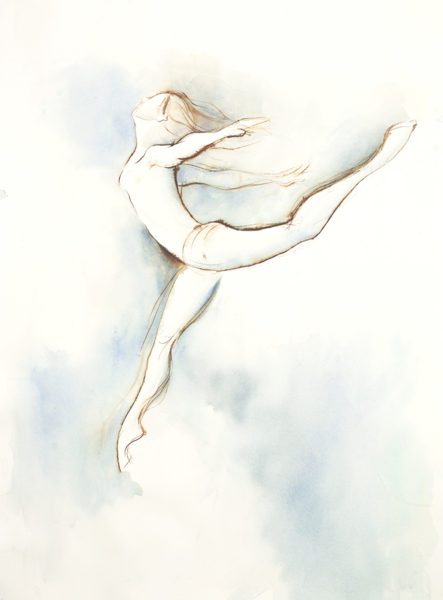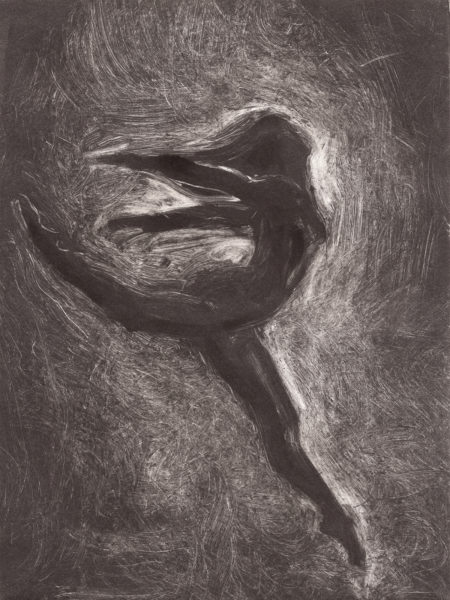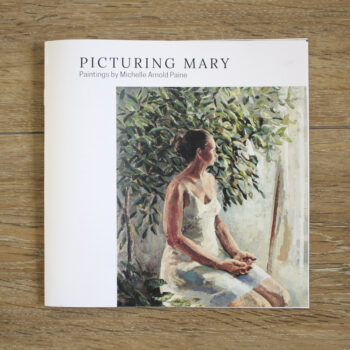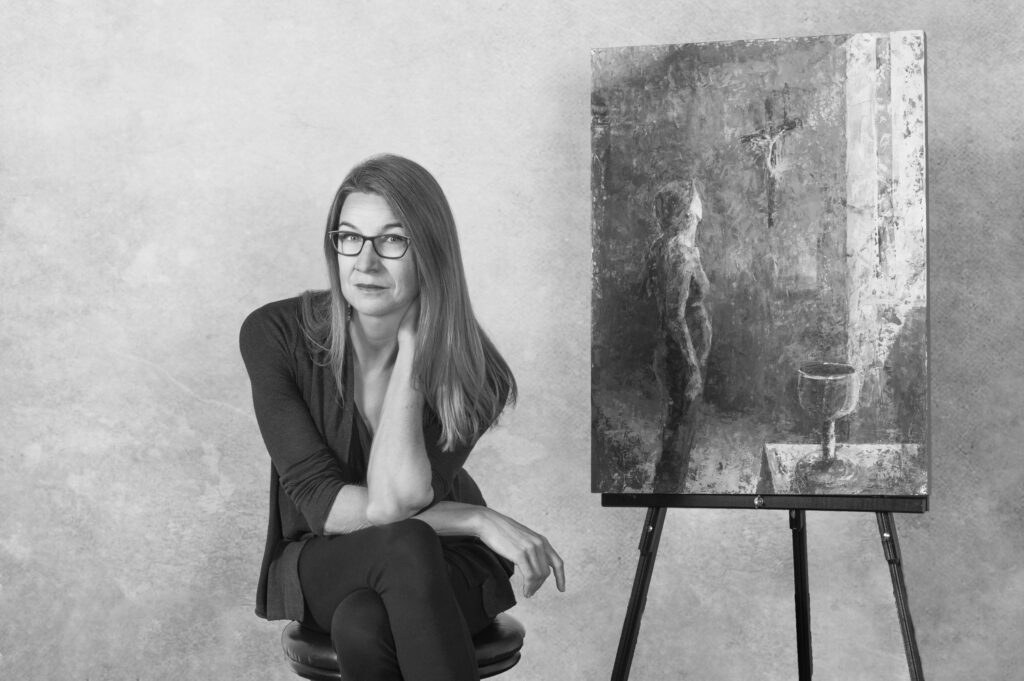Mary Dances the Magnificat
To me, Mary dances the Magnificat. The Magnificat is Mary’s song of Thanksgiving after the angel Gabriel comes to tell her she will become the mother of the Messiah (the Annunciation). When I read Mary’s Magnificat song in Luke 1:46-55, the language is so exuberant that I can’t imagine her standing still. I also find echoes of Miram’s song in Exodus 15:21. It is a song of joy and triumph because they recognize the power of the Creator God.

Magnificat Leap, Ink and watercolor on Paper, 30″ x 22″ ©Michelle Arnold Paine Click to Purchase
I have always read Luke 2 as part of the Christmas story. However, while studying in Italy as a Junior in college I began to see Mary everywhere. She was on the street corners and in every church. In addition, she even appeared in new friendships. For example, the sisters who hosted us in Orvieto, of the order of the Company of Mary Our Lady, spoke to us frequently of their devotion.
I discovered the Magnificat in the Liturgy of the Hours because of a new friend I had met at the Orvieto library several weeks after my arrival. She had seen me at Mass and invited me to Vespers at a convent of the order of Poor Clares. They were cloistered nuns who had dedicated their lives to prayer in community, vowing not to leave the convent. In the Liturgy of the Hours, the Magnificat is a daily prayer, part of the traditional Vespers service.
The Magnificat in the Liturgy of the Hours
It is 5:55 and I kneel on the hard wooden pew in the cool, dark air of the Monastero di Buon Gesu (Monastery of the Good Jesus). I hear the outer door open, letting in warm summer air, the noise of traffic, and my friend Anna, who first brought me here a few months ago. It shuts again, leaving us quiet in the “peace that is not of men.” Anna kneels and crosses herself before coming to sit in the pew behind me. I catch her eye as the nuns begin filtering into the choir area. An iron grille separates us from the nuns: they have vowed to live a life separate from ours. They are dressed in simple brown habits and wear sandals – even in winter. How did the young Italian women in this convent choose this life?
I would feel more at home in the church of San Lorenzo down the street with its simple, undecorated arches built from the soft, warm tufa stone on which, and out of which, this small Umbrian city is built. But the poor Clares are here, where the simplicity of their dress and their lifestyle contrasts sharply against the gilded swirls surrounding the dark shadows of a sentimental seventeenth-century painting. In the ostentatious opulence of their Baroque church, I confront both the arrogant wealth and the humble simplicity of Catholicism.
The bell rings 6:00pm and the vespers service begins. This is the fifth time today these women have gathered together here for prayer. Many of the women here have done so thousands of times. After a couple of readings and the singing of the psalms, my voice joins the beautiful, clear voices of the choir in the singing of the Magnificat – Mary’s song. Every day they sing this. I am beginning to memorize it in a language not my own…
“L’anima mia magnifica il Signore
Il mio spirito esulta in Dio mio salvatore.” Luke 1:46
Why the Magnificat?
Why this prayer, Mary’s song, above other biblical songs, day after day, year after year? She portrayed in so many places, in so many ways; why emphasize her so much?
“Catholics pray to Mary and the saints but we believe that Jesus is our only intercessor with God” had always been the explanation of Catholic/Protestant differences in my youth. And with that, we put the virgin Mother of God on an Evangelical shelf to gather dust. Perhaps we were afraid her presence in our thoughts and sermons might entice us with a temptation to idolatry. In college I saw professors and students alike scour the Bible for female role models and “biblical models of womanhood,” but we rarely gave much thought to Mary.
After encountering dozens of altarpieces of the Annunciation in Italy, I begin to see the Holy Spirit overshadowing Mary as a union of love. After all – isn’t that how God ordained the union of a man and a woman, to become one soul and one flesh which then produces a child? What better way do we have to understand divine love? The Magnificat is a song of praise, full of joy and justice, the essence of the Gospel – uncomfortably bold in its heavenly vision.

“Magnificat Leap”, Monotype on Paper, 8″ x 6″ ©Michelle Arnold Paine Click to Purchase
Why does Mary dance?
Mary dances the Magnificat as she is filled with joy at the wonders of the Spirit. God calls us, too, to dance at the wonders of the Spirit of love as it overshadows us. We are to be women as Mary was, “clothed with the sun” (Rev 12:1). Clothed with the sun! What does it mean to wearing the light of Christ’s love as a garment? It is an image filled with beauty and songs of praise.
This is redemption. This is why Mary is the second Eve, as Christ is the second Adam. In contrast to Eve, when called to obedience, Mary accepts God’s will and rejoices in creative song. God made his infinite, holy, and Almighty Power visible in her life and Mary was available and accepting. Mary’s faith in God’s promises makes her blessed. Her joy in obedience reverses the curse which Eve brought upon the human race.
View the entire series of Mary paintings in my web store.



